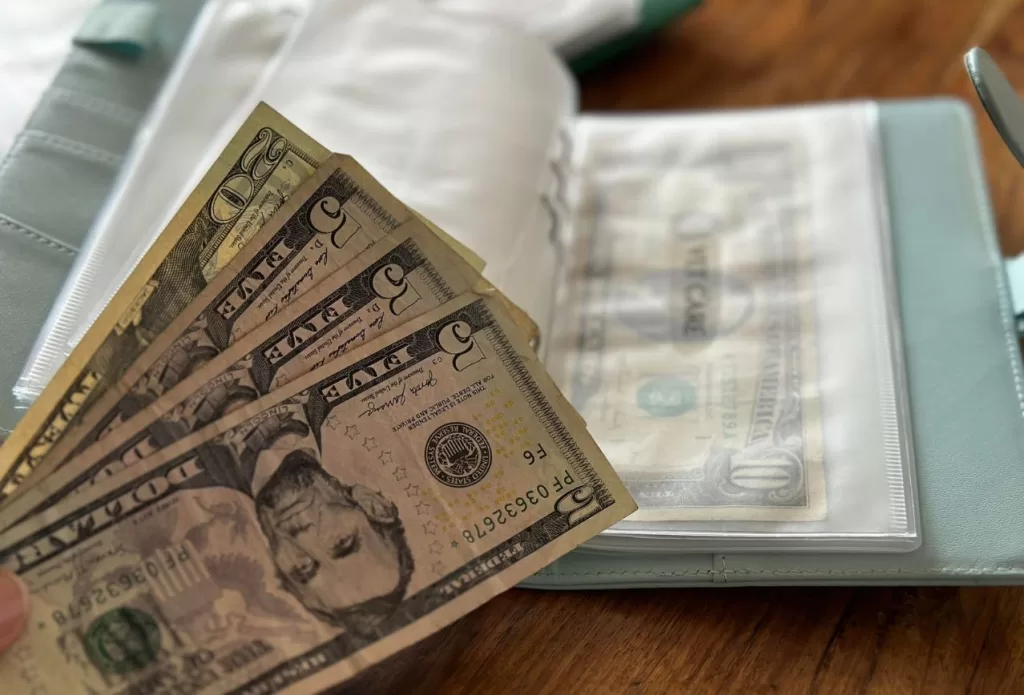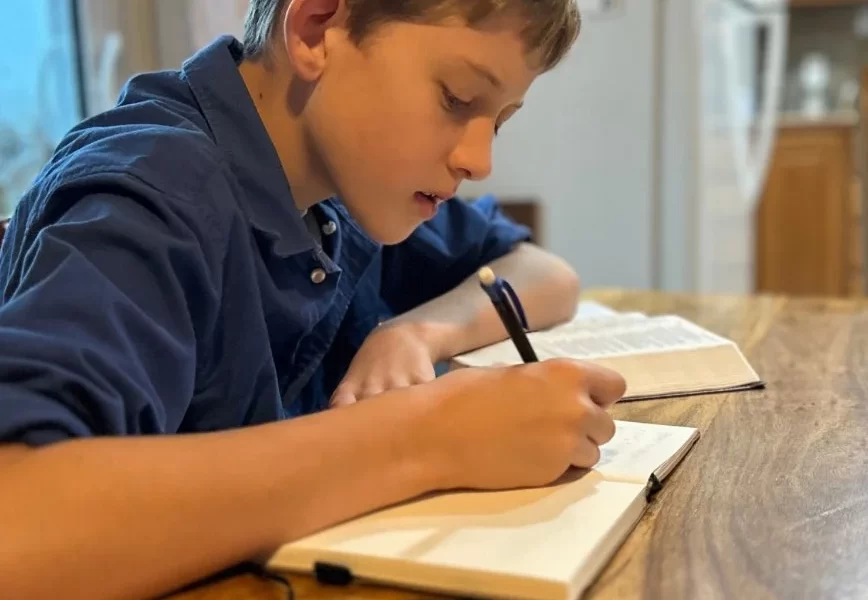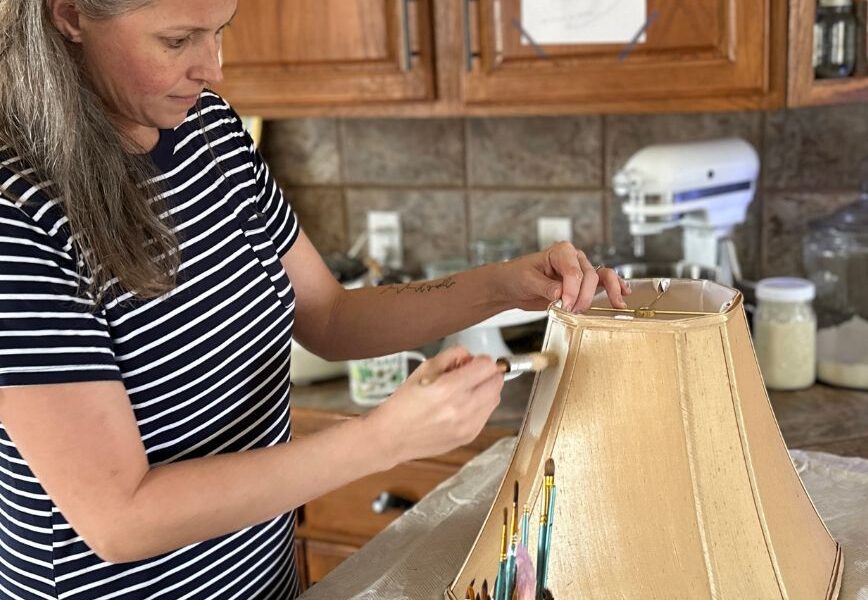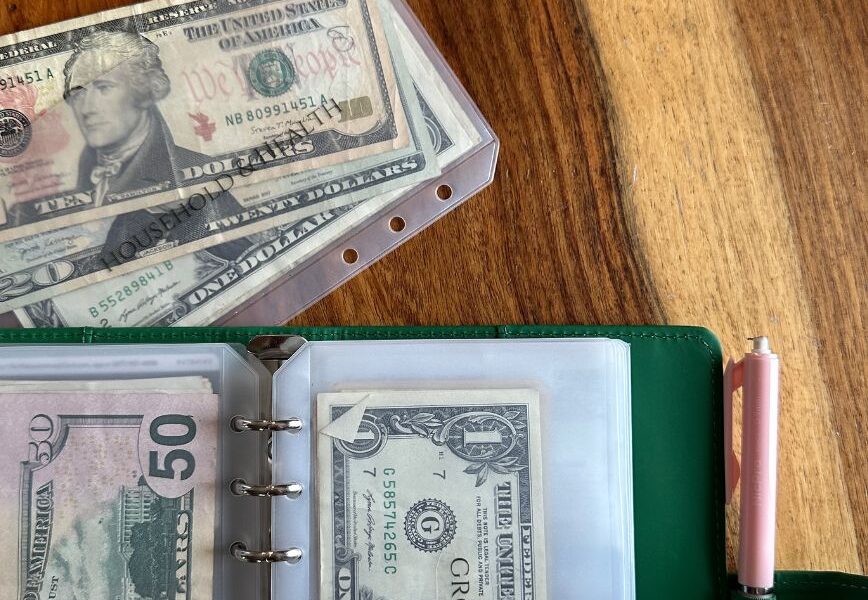Whether you are already living as a single income family OR researching how you can make it happen so you can stay home. Not only are these ideas doable, but after you do them, you will be wondering why you weren’t using them before! These 16 ways to save money as a single income family will have you saving money fast!
As an Amazon Associate I earn from qualifying purchases.
How to Save Money as a Single Income Family
- Pay cash
- Repair before you replace
- Make yourself
- Less stuff is more
- Simplify meals
- Make a Budget
- Cut unnecessary bills
- Condense your errands
- Buy secondhand
- Avoid eating out
- Reduce buying paper products
- Pay off debts quickly
- Give thrifted gifts
- Cut subscriptions and cable
- Don’t use credit cards
- Avoid additional debt
Cutting down to a single income family can be scary. I get it. You have grown used to the idea of having two incomes, and perhaps have grown your personal cost of living because of those two streams of income.
However, it is absolutely possible to be content and cozy on a single income. We are a family of 5 that does it on 40K a year. We have friends with 4 and 5 kids that live on single incomes. I will also encourage you that even if you still need more than one income stream to help your family out of debt, save for some specific financial goals, or just because you are like me and enjoy generating an income, you CAN make your stay-at-home-mom goal happen with these 16 ways to save money as a single income family.
In no particular order…
Save Money by Paying With Cash
We have become so detached from how much money we spend between debit cards, credit cards, and online spending. It takes no effort to swipe or “Buy now” with the click of a button. But, if you sat down with your bank statement and categorized your spending, I bet you would be surprised at how much those little purchases add up to and how much money you are really spending.
By paying for cash as much as possible, you will be more aware of your spending habits. And you will be less likely to spend frivolously because you FEEL the difference of spending that money verses a debit card or online purchase.
We use a cash envelope or cash stuffing method. I’ll probably create a post on this down the road, but it is a budgeting method that uses predetermined amounts of money to be spent by category. You can read an introduction about it here. By creating spending categories for things like groceries, fuel, kids’ activities, clothing, pets, fun money, and eating out, we designate how much money we will spend in those areas and when the cash is gone, its gone. This helps reduce your spending by utilizing a budget and telling your money where to go. We will go more into this down the list.

By paying with cash our family saves money by allotting set amounts for spending and not spending beyond what is budgeted.
Repair Before You Replace
Or, go without!
When things break or tear or fall apart, it can feel so inconvenient. We went through 2 microwaves in 2 years. No, they weren’t top of the line. They were just from Walmart. However, it still makes you have to stop and consider your next move. In this situation, it was the perfect time to just ditch the microwave. I tried to convince my husband to go without after the first one broke, but he wasn’t ready to part with it yet. After the second one went bananas, he was easier to convince. 6 months later and we don’t miss it!

But Casey, what about bigger things like the washer and dryer? Of course, you have to keep the laundry going. And I am not suggesting you go all pioneer gal and wash your clothes in a bucket with a stick. What I am suggesting is that either your husband gets on YouTube and looks up how to do the repair himself, or you contact a local repair person to fix it for you. You will surprise yourselves at how many repairs you can do on your own with a tutorial. One of my friends loves a good challenge and saving money for her family. She got on YouTube and figured out how to make the needed repairs on her high-end dryer 3 times over 2 years before they finally had to replace it.
Now, sometimes, the way things are made any more, it is almost as expensive to have a repair person come out and do the job as getting a new one. IF that is the case, do your due diligence and shop around. Consider buying a gently used appliance. Only buy what you can afford to pay cash for.
Make It Yourself to Save Money as a Single Income Family
Another way to save money as a single income family is to make things yourself. From food, to furniture, to clothes. Having a set of skills that allows you to take miscellaneous or deeply discounted items and turn them into something amazing will create so many options for your family.
I wanted a playhouse for our kids. To buy a new one we would’ve had to spend hundreds of dollars. Yet, $8 in pallets and a box of screws from our garage and I was able to create a cute playhouse for our boys and my daycare kids to play in.
This also comes in handy with your homemaking. Pinterest is full of so many cute ideas that make one want to redecorate their home constantly. It can be easy to fall into the comparison trap and not feel content with your own home. It also makes it easy to break your budget if you decide you “need” new throw pillows or statement art like you saw as you were scrolling along. I say, look around at what you already have and can transform into something else. Or, find a way to make it for less.

Less is More
Another great way to save money is to declutter and reduce the amount of stuff you have. The more you have, the more likely you are to keep buying more stuff. Then, you have to maintain that stuff, buy more storage and organization things for that stuff, and so on.
It can be hard and overwhelming to get rid of things. “What if I need that someday?” Sure, it is a possibility. But after considering a couple questions you will realize that storing, repairing, and managing that stuff isn’t worth the cost to keep it.
Can you borrow it from a friend?
Could you replace it at a yard sale for less than $10?
Have you used it in the last two years? The last year?
While this idea may not save as much money as some of the others, it will definitely save your sanity as a SAHM. Toys, tools, clothing, and knick-knacks are common things we keep in over abundance. You don’t need 5 screwdrivers of the same size. Your kids will feel less overwhelmed when you reduce their toys down to what they can clean up themselves in 3-5 minutes. And you will breathe easier and maintain your home happier when you can reset a room to ready in 15-30 minutes.
Save Money by Simplifying Your Meal Plan
I love to cook and try new recipes. I used to plan these awesome weekly meals with different meats and side dishes, fancy spices, and so on. Those quickly add up on a grocery haul and can break a food budget real fast.
Now, with batch cooking and cooking from scratch, I simplify our weekly meals by cooking one or two proteins, a couple of main veggies and starch, and transforming them into different meals.
By keeping breakfast simple with homemade staples, we save a lot of money there. No boxed cereal or convenience foods. Those add up so fast, don’t fill up tummies for very long, and don’t go as far. By rotating a simple breakfast lineup we have well fed tummies and a trim budget.
It is also important to make a plan. By not thinking ahead, even 3-5 days, and considering how you can stretch a couple of main food items over a few meals, you end up spending way more money and wasting way more food. Meal or menu plans are a crucial part of saving money as a single income family.
By making a simplified meal plan our family of 5 spends between $85-140 per week on groceries.
Save Money as a Single Income Family by Making a Budget
This one is CRUCIAL to making a single income work. You have to not only know where all your money is going, but you need to tell your money where to go. By making a budget you have a clear picture of what money comes into your home, and how it is used.
If you have never made a budget before, I have some helpful tips ready for you here.
Making a budget will save you money over time because it will help you replace old and bad spending habits with new and smart spending habits. It will also improve your marriage by helping you and your husband work together in your short and long term financial goals. By setting boundaries around your spending habits together you create a teamwork mentality on your saving and spending.
Cut Unnecessary Bills
Part of being used to a dual-income household is often our spending reflects our income. When people make more money they tend to add more things into their monthly spending because “they can afford it.” With that comes added bills.
Perhaps you upgraded your phone and now have an additional $40 a month in installment on your monthly phone bill. Or, you find out that you are subscribing to 4 different streaming services between $6 and $15 dollars a month. Maybe you have some memberships to places you don’t even frequent on a regular basis.
By being honest with yourself, cutting out the extras, and trimming the excess, you can save hundreds of dollars a year.
And one really cool thing to think about as you go through modifying these spending habits is you will learn ways that you actually boost your income by how much money you save by being home.
By reducing subscriptions and cutting unnecessary bills our family saves $100+ per month.
Condense Your Errands
Being a stay-at-home mom doesn’t equal homebound. In fact, it can be tempting to get out of the house with something different every day. But one way to save money as a single income family is to condense your errands into one or two days a week.
You will be more productive, reduce impulse spending, and save money by keeping appointments, shopping errands, adventure outings and the like into one or two days.
Some stay-at-home moms assign each day of the week to a productivity category. This can help keep you organized and in a rhythm. Perhaps Monday is for appointments, shopping, and errands, Tuesday is a batch cooking/meal prep day, Wednesday is a zone cleaning day, Thursday is your office day for making calls, paying bills and updating your budget, Friday is for organizing and decluttering, and Saturday is for outdoor work and maybe a family adventure outing. Sunday, the Lord’s Day is for worship and rest.
Or however you see fit to organize your week. By keeping your errands condensed and together you are less likely to overspend and over-shop.
Buy Secondhand
This is one of my personal favorites! Whenever there is a need for clothes, furniture, décor, or other items, if I can’t make it, I will try to thrift it. If I cannot thrift it then I will buy new.
This is most commonly successful for clothing, furniture, and décor pieces though. Kids grow fast. For our boys, if there is not a hand-me-down from an older brother or friends, I next hit my favorite thrift and secondhand stores. The more you shop in this fashion the more you will learn the best places to score good pieces. For example, when we lived north of Kansas City, we had a store called Savers (No longer there). I knew I could get high end, good quality, used clothes for our kids at a fraction of the cost. A lot of that had to do with the demographic that was in that area.
Now, locally, I have my favorite thrift stores for home items, and my favorite places for clothes and furniture.
I also recommend keeping an updated list of items (with sizes or measurements) you are looking for on your phone or in a small notebook in your purse. When you are out and about and see something, you don’t want to wonder if it was a need or if it is the right size.
BONUS SAVING TIP:
If you can’t score it secondhand, learn where your best discount store are in your area. Make a “research stop” on one of your errand days and just go look around in them. Make notes of the kinds of items they carry and price points to see if they are worth shopping at when needs arise.
Avoid Eating Out
This one takes practice, grace, and planning. Your success in this area depends on planning ahead for the week and knowing where you will be when hunger may happen. Having some snacks ready in the car or dinner cooking in the crockpot at home on afternoons or evenings that you have activities can be your biggest assets in this area.
You could even pack a picnic meal for those occasions.
I am not saying to never eat out, but it can be easy to use it as a crutch. Not wanting to cook? Order pizza and there goes $30-50+. Running errands during lunch time and the drive thru will run you another $20-40+.
If you are going to eat out, choose to make it a special and planned occasion. Perhaps a date night for you and your husband once a month, and then a family date night on another evening. OR, save some money by opting for a breakfast date.
BONUS TIP:
Hoard your gift cards you receive for birthdays and holidays and save them for the times you find yourself needing to grab a bite to eat away from home. Then you reduce or eliminate your cost for that unplanned budget buster!
Save Money by Reducing Buying Paper Products
This one makes my friends giggle. You will very rarely find paper plates, plastic cups, paper towels, or tissues in our home. I feel like I am buying trash or throwing away money whenever we do.
Switch to extra towels instead of paper towels. You do laundry regularly, it isn’t going to inconvenience you to have 10 more rags to wash.
Make or buy cloth napkins. The same logic applies as the paper towels, and you look fancy when you hand out cloth napkins to guests instead of paper napkins that tear easily.
Spending a little more on the front end to have enough plates, bowls, and cups to host guests with will long pay for itself when compared to disposable plates, cups, and bowls. Washing dishes doesn’t take that long and you reduce your household waste.
As for tissues, that is why we buy toilet paper. It is the only paper product I don’t wince at purchasing. And if it is good enough to wipe your hiney, its good enough to blow your nose.
By not purchasing these things regularly we save $30+ per month.
Pay Off Your Debts Quickly
People end up spending hundreds of dollars in interest by carrying payments on debts. It is the societal norm to put anything on a payment plan these days. Even your online purchases can now be financed in 3-6 low monthly payments. Goodness, temptation is around every corner!
Using a method called a debt snowball, which is attacking your debts with the lowest payment first and rolling that momentum into the next payment, and so on, is the best way to pay off your debt quickly. You want to attack this with focus and intention.
Depending on the debt load you carry, you may have to have some form of income to help pay this down faster. This is where we saw a huge blessing in me owning and operating an in-home daycare. I was able to add income to our household, stay home with our kids, and we were able to pay off our van and credit card. I have also earned an income by making custom hand-lettered signs and selling artwork.
When you and your husband work together on making and executing a plan, it is worth all the work and sacrifice to not owe anyone anything!
By paying off our credit cards and van early we saved hundred of dollars in interest and now save $500 a month by not carrying any debt.
Give Thrifted and Handmade Gifts
It is absolutely fun to go shopping for gifts in the thrift stores! Imagine getting an invitation to a holiday dinner and wanting to bring a hostess gift. You could thrift a basket, a set of two tea cups and saucers, a lovely small vase, and maybe a cute set of animal salt and pepper shakers. Throw in a $4 box of flavored tea and pop a cut flower in the vase. Tie a ribbon and paper tag on the basket and voila!
You can thrift vintage toys or even newer toys for way less than buying new. Disinfect and clean them thoroughly and add some books with a note in the cover from you and you have a fun and unique birthday or baby shower gift.
Perhaps you have crafty hobbies that you enjoy. Bring back the lovely idea of handmade gifts for birthdays and Christmas. You can bulk make items like bar soap, homemade vanilla bottles, spice mixes or other kinds of food mixes, or more specific items like blankets or washcloths that you crocheted.
I have made peg doll play mats with felt, embroidery floss, peg dolls, and paint as gifts for kids very inexpensively. For gifts for all of our friends kids one year I sewed them all pencil rolls with fabric I purchased on sale. For $25-30 of fabric and supplies I was able to make 17 pencil/makeup brush rolls.
Be careful though, if you have a lot of gifts to give in a season and try to make to many different kinds of things, handmade gifts can become very expensive. That is absolutely okay when you are creating from a place of love and plan accordingly.

BONUS TIP:
Build into your budget a small amount of money to set aside each month for gifts. You can save $25 per month over 12 months and have $300 ready for the Christmas season. Or add a cash envelope in your budget binder for gifts and add $10-$20 to it each month. You will always have cash ready for a needed gift. Even if it is a $5 coffee or ice cream gift card in a pretty card to give someone.
DON’T USE CREDIT CARDS
Save money as a single income family by not using credit cards. They are not your friend. And by keeping a card around to use as a crutch for “emergencies” is a dangerous game to play.
If you already have debt to pay off, or just paid off credit cards, you are more vulnerable to accumulating credit card debt again. It is best to just avoid it completely and not even have them as an option.
“But, I earn cash back and points for travel.”
That may be, but those are marketing traps to make you want to use the card. Credit card companies pay for all of that cash back and rewards with the interest paid by people who don’t pay their credit cards. Its all marketing. And its best to avoid them.
If you can’t afford to pay cash for it, you don’t need it.
Save Money by Avoiding Future Debts
My last tip for saving money as a single income family is to avoid any future debts by saving money. Having an emergency fund of savings acts as a better cushion and safety net than carrying around a credit card.
If you are in the beginning stages of revamping your budget so you can stay home, I recommend familiarizing yourself with the Ramsey Solutions 7 Baby Steps to Financial Freedom. First, you want to have $1000 set aside in an emergency fund. This is a cushion for your family for the “what ifs” that can bust a budget really fast. Needing new tires, a broken window, and insurance deductible, and the like.
Then, you will funnel all extra cash to pay off your debts. Smallest payment to largest you take them out like a rolling snowball.
Once you are out of debt (except your house payment), focus back on your emergency fund and getting it fully funded to equal 3-6 months of expenses. 6 months is best!
Then you move on through the remaining steps.
A major factor of your success through the steps is breaking old, bad spending habits and replacing them smart, new habits.
By following sound financial advice, building smart money habits, and being prepared for financial budget busters, you will better be able to avoid future debts.
Pay cash for older cars. Say no to payment offers on big purchases. Buy secondhand and pay for it in cash. You get the idea.
This is possible!
You will have more peace of mind when you practice these wise and tested stewardship practices. Remember, we can’t take it with us to heaven. Our goal is not to store up earthly treasures that moth and rust destroy, but to store up heavenly treasures. By not carrying debts and living free financially, you are in a better place to give joyfully and freely. It all belongs to God and we are simply stewards of the materials and resources He sees fit to give us.
So, work hard, save wisely, spend frugally, give generously, and live abundantly in the hope of Christ that lives in you!
To read some more frugal living tips from another momma of a large family head over here.
What are some other ways you save money in your household?




Wonderful tips for single-income families! With careful planning and smart choices, it’s possible to thrive on a single income while still saving and enjoying life.
SO much wise advice here!!
Awesome!
Totally agree with all of these!
Yes, and even those sacrifices often turn into blessings if your perspective shifts a little.
Wonderful! You’re welcome!
Thanks!
Yes we do! It has been such a great tool for us in becoming debt free!
Great! Thank you!
This is a lot of good encouragement and tips!
Such good frugal living advice! I totally agree. I grew up with second hand clothes before thrifting was popular. Paying cash and living within your means is also huge! Do you follow the Ramsey Solutions?
Great tips!
Since I’m on maternity leave a lot these years, this info definitely comes in handy! Thank you!
Love these ideas! There’s so many ways to cut back on spending if you’re willing to make some sacrifices here and there 🙂